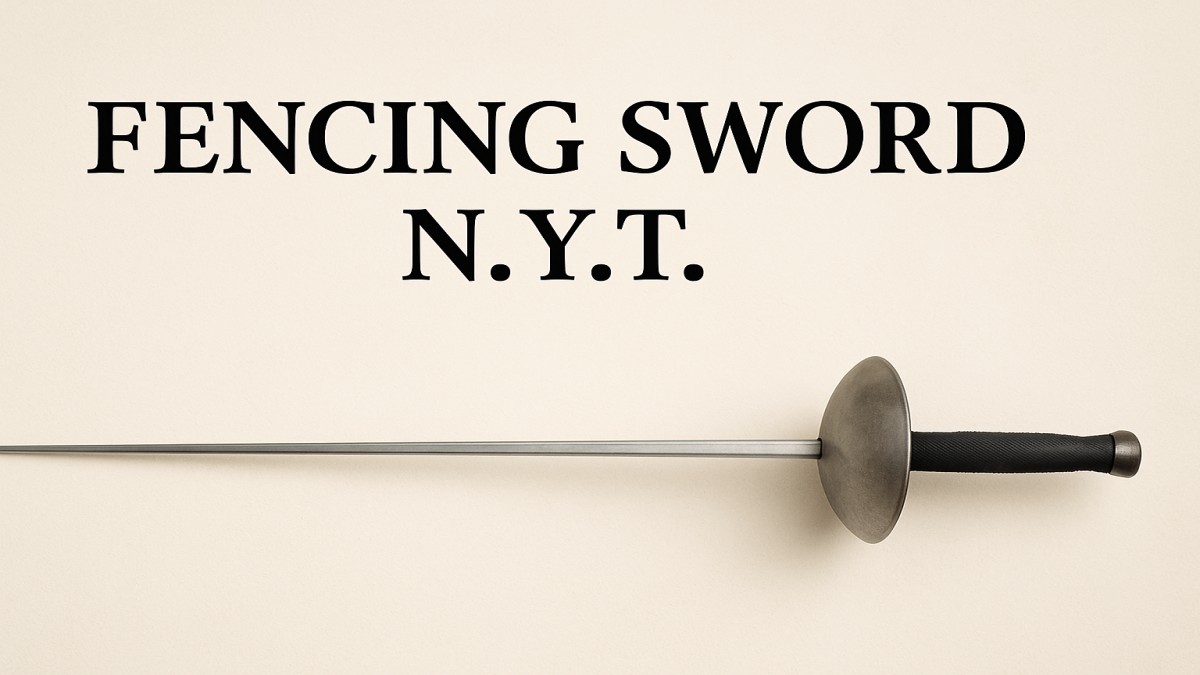What is a Fencing Sword?
A fencing sword is the signature weapon used in the Olympic sport of fencing. It’s sleek, agile, and rooted deeply in tradition. There’s a surprising amount of strategy behind each thrust and parry and the New York Times has taken note, highlighting a growing interest in fencing and the gear behind it.
Fencing Through the Ages
Fencing evolved from historical dueling and military training. From aristocrats dueling at dawn to Olympic athletes, the sport has come a long way. The fencing sword we see today is a product of centuries of evolution, craftsmanship, and competition.
Types of Fencing Swords
Let’s break down the three main types:
Foil
A lightweight weapon with a small, circular guard. Points are scored by hitting the torso with the tip. It’s all about precision and timing.
Épée
Heavier than the foil, with a larger guard. The entire body is a valid target, and the first fencer to hit scores the point. It’s often described as the “purest” form of fencing.
Sabre
This is the swashbuckler’s dream. A cutting weapon where hits can be made with the edge of the blade. Fast, aggressive, and dramatic.
Anatomy of a Fencing Sword
Every fencing sword has key components:
- Blade: Flexible, made from tempered steel.
- Guard: Protects the hand.
- Grip: Often ergonomic, allowing for control.
- Tip: Capped for safety and connected to electronic scoring gear.
Sword Construction & Materials
High-quality fencing swords are crafted using lightweight, durable alloys. Blades are designed to flex on impact, reducing injury risk while maintaining performance. A perfect balance is essential — literally. A well-balanced weapon feels like an extension of your arm.
Rules and Scoring
Each sword type comes with its own rules:
- Foil & Épée: Use electronic scoring — when the tip touches a valid target, the system registers the hit.
- Sabre: Uses edge and tip — hits to the upper body count.
Target areas vary. Foil limits hits to the torso, épée allows full-body targets, and sabre scores from the waist up.
Fencing in Pop Culture & the NYT
From The Princess Bride to Olympic coverage, fencing has fascinated audiences. The NYT’s increasing coverage of niche sports has included profiles on fencing champions, deep dives into sword manufacturing, and opinion pieces on its rising popularity in American high schools.
Choosing the Right Sword
Beginners should go with the foil — it’s lighter, and the rules are straightforward. Competitive athletes often specialize, choosing a sword that fits their style: strategic (épée), fast (sabre), or precise (foil).
Maintaining Your Fencing Sword
Proper maintenance ensures safety and longevity. Clean the blade after each use, inspect the tip for wear, and store the sword in a dry, padded case.
Essential Fencing Gear
You’ll need more than just a sword:
- Mask: Protects the face.
- Jacket & Gloves: Reinforced for safety.
- Shoes: Designed for fast footwork and grip.
Training Tips
Practice footwork before blade work. Think of fencing like physical chess — mental agility is as vital as physical skill. Drills, video analysis, and sparring are all part of a strong training regimen.
Champions and Their Blades
Did you know Olympic gold medalist Valentina Vezzali favored a specific type of foil? Elite fencers often personalize their gear for feel and performance, tweaking grip size, blade flex, and even tip sensitivity.
Where to Buy Your Sword
Some top brands include:
- Leon Paul
- Uhlmann
- Allstar
While online stores offer variety, local shops let you test the feel — a critical factor in sword choice.
The Future of the Fencing Sword
Smart swords are here — embedded sensors, real-time analytics, and even virtual fencing platforms are emerging. The sport is evolving fast, without losing its historical elegance.
Conclusion
Fencing swords are more than just tools they’re a symbol of a centuries-old art. Whether you’re stepping into your first class or following Olympic athletes, understanding the fencing sword brings you closer to the heart of the sport. It’s elegance, discipline, and strategy rolled into one.
FAQs About Fencing Swords
1. What is the safest fencing sword for beginners?
The foil, due to its light weight and limited target area, is ideal for beginners.
2. Can I buy a fencing sword without joining a club?
Yes, but it’s recommended to try one first or get guidance from a coach.
3. How long does a fencing sword last?
With proper care, it can last months or even years, depending on intensity of use.
4. Is fencing swordplay like in movies?
Not really — movie fights are choreographed. Real fencing is faster and more strategic.
5. Are fencing swords dangerous?
Not when used with proper gear and under supervision. The sport is remarkably safe.

 Blog2 months ago
Blog2 months ago
 education2 months ago
education2 months ago
 Blog2 weeks ago
Blog2 weeks ago
 News2 months ago
News2 months ago



















